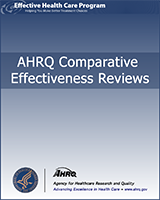From: Introduction

NCBI Bookshelf. A service of the National Library of Medicine, National Institutes of Health.
| Medication | Type | Trade name(s) | Half-life or other relevant pharmacokinetic feature | Labeled indications | Dosing for primary prevention of breast cancer | Dose adjustments for special populations |
|---|---|---|---|---|---|---|
| Tamoxifen citrate | Selective estrogen receptor modulator(SERM) | Nolvadex Soltamox | Elimination half-life 5 to 7 days | Reducing the incidence of breast cancer among women at high risk for breast cancer. Adjuvant treatment of breast cancer. Treatment of metastatic breast cancer in men and women. Treatment of intraductal breast cancer in situ after surgery and radiation to reduce the risk of invasive breast cancer. | 20 mg per day for5 years | None noted |
| Raloxifene | Selective estrogen receptor modulator (SERM) | Evista | Elimination half life 27.7 to 32.5 hours | Reducing the risk of breast cancer among postmenopausal women at high risk. Reducing the incidence of breast cancer among postmenopausal women with osteoporosis. Treatment of osteoporosis among postmenopausal women. Prevention of post menopausal osteoporosis. | 60 mg per day; optimal duration not described | None noted |
| Tibolone* | Selective tissue estrogenic activity regulator (STEAR) | Livial | Elimination half-life 10 hours | Prevention of postmenopausal osteoporosis. Treatment of vasomotor menopausal symptoms. | 2.5 mg per day for vasomotor symptoms; 1.25 mg per day for median 2.8 years in LIFT breast cancer prevention trial | None noted |
Not currently approved by the U.S. Food & Drug Administration.
Abbreviations: LIFT, Long-Term Intervention on Fractures with Tibolone.
Mechanisms of action (http://www
Tamoxifen competitively inhibits the binding of estradiol to estrogen receptors, thereby preventing the receptor from binding to the estrogen-response element on DNA. The result is a reduction in DNA synthesis and cellular response to estrogen. In addition, tamoxifen up-regulates the production of transforming growth factor B (TGFb), a factor that inhibits tumor cell growth, and down-regulates insulin-like growth factor 1 (IGF-1), a factor that stimulates breast cancer cell growth. Tamoxifen also down-regulates protein kinase C (PKC) expression in a dose-dependant manner, inhibiting signal transduction and producing an antiproliferative effect in tumors such as malignant glioma and other cancers that overexpress PKC.
Raloxifene binds to estrogen receptors (ER) as a mixed estrogen agonist/antagonist; it displays both an ER-alpha-selective partial agonist/antagonist effect and a pure ER-beta-selective antagonist effect. This agent functions as an estrogen agonist in some tissues (bones, lipid metabolism) and as an estrogen antagonist in others (endometrium and breasts), with the potential for producing some of estrogen’s beneficial effects without producing its adverse effects.
Tibolone is a synthetic anabolic steroid with estrogenic, androgenic and progestagenic activities. The 3alpha- and 3beta-hydroxy metabolites of tibilone activate estrogenic receptors (ERs) in bone and vaginal tissue leading to a decrease in bone turnover, and decreased vaginal dryness, respectively; derived from the 3beta-hydroxy metabolite, its delta4-isomer activates androgenic receptors (ARs) in the brain and liver and progestogenic receptors (PRs) in endometrial tissue, affecting sexual function, lipid metabolism, and endometrial function, respectively. In breast and endometrial tissue, tibolone metabolites inhibit sulfatase, preventing the conversion of circulating estrone sulfate and estradiol sulfate to estrone and estradiol, respectively; estrogen-mediated effects in the breast and uterus are thus reduced.
From: Introduction

NCBI Bookshelf. A service of the National Library of Medicine, National Institutes of Health.